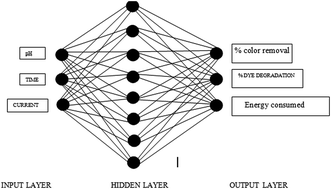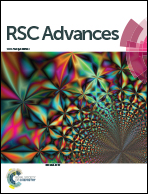Modeling and evaluation of electro-oxidation of dye wastewater using artificial neural networks
Abstract
Treatment of CBSOL LE red wool dye containing wastewater by an electro-oxidation (EO) method was investigated using Ti/RuO2 electrode. The performance of the EO system was evaluated in terms of % dye degradation (Y1) and % colour removal (Y2) along with important operating cost parameters such as energy consumed (Y3) at three EO process parameters: pH, current (i) and time (t). ANNs were applied for the modeling of the EO process, and optimization was performed by using multi response optimization by desirability function approach of Central composite Design (CCD) with stimulated data obtained from ANNs. Modeling for the treatment of CBSOL LE red wool dye wastewater by the EO process was done successfully by ANNs, and optimization by CCD vividly underscores interactions between variables and their effects for the degradation of CBSOL LE red wool dye by the EO process. At the optimum conditions, the actual % dye degradation (Y1), % color removal (Y2) and energy consumed (Y3) were 89.87%, 96.71%, 2.029 Wh respectively. The predictions agree well with the experimental results. It was found that both the mechanisms of EO treatment i.e. direct oxidation and indirect oxidation are responsible for the dye degradation/color removal. Color was found to be nearly completely removed, whereas 10.13% of dye is present in the treated wastewater.


 Please wait while we load your content...
Please wait while we load your content...